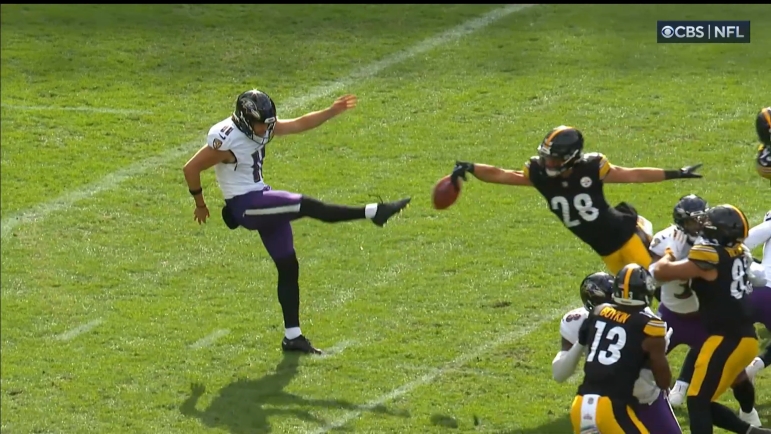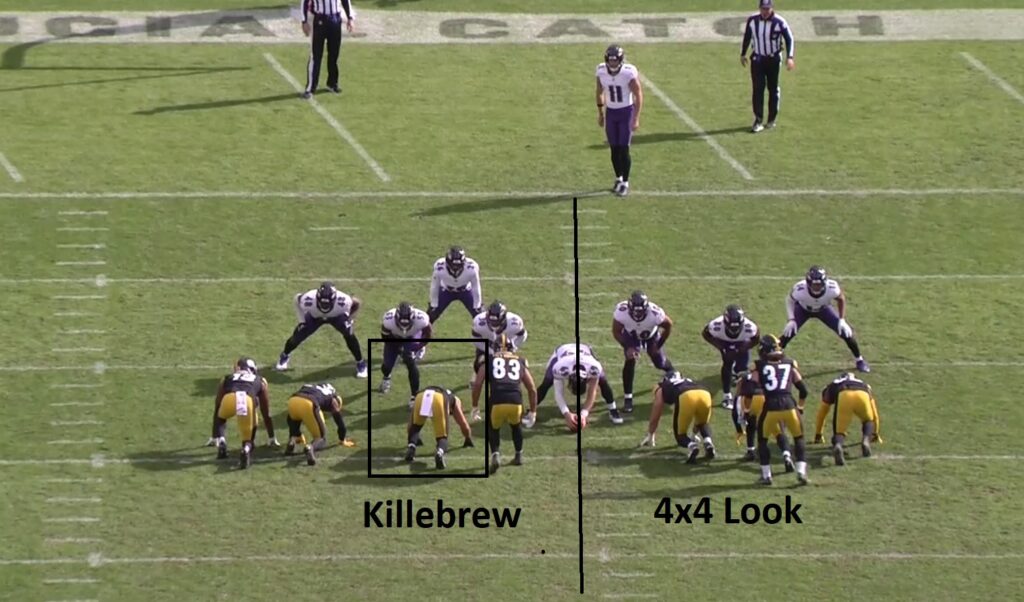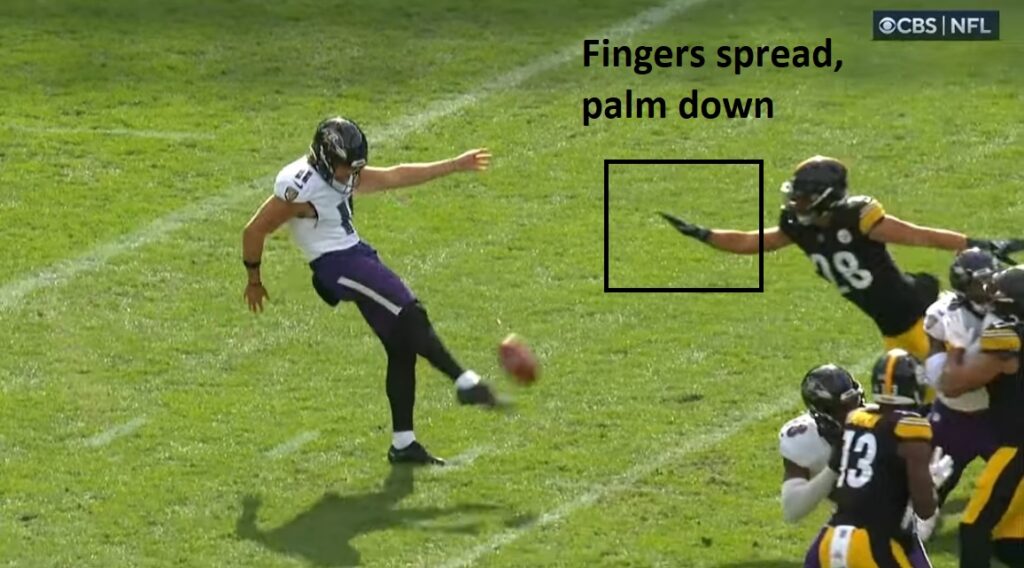Miles Killebrew’s blocked punt in Sunday’s win against the Baltimore Ravens was a gigantic play. And it’s not like you see punt blocks every week. So you knew we had to talk about it once the All-22 came out. Few have been better at putting hand-to-punter’s-foot like Killebrew, who has three blocks in three seasons with the team. Every single one of them have come in the fourth quarter, making weighty plays like these matter even more.
They’ve been game-changing plays. His block in the 2021 opener against the Buffalo Bills helped the Steelers pull off an upset road win. His other block that year jump-started a comeback against the Los Angeles Chargers, though the Steelers fell short in the end. And his block Sunday was the best offense Pittsburgh had up until that point, swinging the pendulum in the Steelers’ favor in a fourth-quarter comeback.
So how did the rush get home? Let’s break it down.
Honestly, while there was a twist to the rush, the Steelers didn’t have some crazy or overwhelming plan that completely confused the Ravens. They recognized it and had the chance to block it up. They simply didn’t execute. Or really, Killebrew just did a great job to win his matchup.
When it comes to rushers or coverage guys on these units, don’t think about it as special teams. Think about it as a pass rush and an offensive line protecting. Just in the way T.J. Watt or Cam Heyward beats a block, Killebrew has to beat his block with the same technique.
Pre-snap, Killebrew is aligned to the left side in this 4×4 look. Three down rushers to each side of the snapper (on punts, there’s no rules for how many players must be on each side like there is on field goals) with two “floats” in No. 83 Connor Heyward and No. 37 Elijah Riley.
Killebrew and Heyward trade gaps with Killebrew slanting into the A gap between the snapper and the right guard. Heyward shoots into the B gap. The snapper is fanning away to the other four-man surface, with Riley and company, with the upback responsible as the fourth man to block Killebrew’s side. That’s usually how punt teams protect, the snapper and upback blocking opposite directions.
Baltimore’s upback is No. 26 Geno Stone, a Pittsburgh-area native and at this point, NFL veteran. Overall, he and No. 30 on the Ravens’ line pick it up well. I don’t see any obvious signs of miscommunication to get a free rusher. But Killebrew’s technique is really good here. With his inside arm, he rips through Stone’s block. Again, just like you’d see a linebacker rip through a block.
He’s able to gain the edge and work upfield. As he finishes ripping through with his inside hand, he uses his outside hand (right arm/hand) to go for the block. And there’s a technique here, too. Fingers spread, palms down (so the ball goes down and doesn’t clip up and off your hand if your palm is out/up) with “big eyes” on the punter’s foot. Gotta key the ball.
Without the free rush, this is a tougher block. Killebrew has to extend and play with great technique to get his hand on the ball. He’s perfect and it hits off his hand/wrist.
The only unfortunate part is the ball just barely rolled out of the end zone for a safety instead of a touchdown. Two of his three blocks with the Steelers have ended in non-touchdowns, his one against the Chargers rolling out inside the five. But they’re still massive plays. Block a punt and your odds of winning a game skyrocket.
Okay, let’s look at the stinkin’ play.
With three blocks as a Steeler and four in his career (Killebrew had one in Detroit), he is a special teams coordinator’s nightmare. Someone who must be game planned against. This is a guy who can wreck a game. He is the T.J. Watt of the punt rush. Just as Watt does on defense, Killebrew demands attention and a plan from the opposing punt-protection unit.
Only here, it’s probably harder to take him away because you can’t just double him the way you can Watt without leaving yourself short on the line. And it’s a reminder of why the Steelers carry at least one to two core special teams guys. They can win you games, too.











